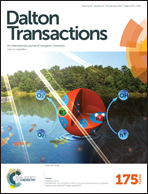Behaviour of the surface hydroxide groups of exfoliated kaolinite in the gas phase and during water adsorption†
Abstract
The chemical and physical properties, and thus the reactivity of phylloaluminosilicates can be tailored by intercalation, delamination, and exfoliation processes. In going from the periodic crystalline to the molecular exfoliated phase, surface defects and modifications gain importance as each face of the phylloaluminosilicate comes in direct contact with the external chemical environment. In this work, we extend our earlier studies on the molecular cluster modelling of exfoliated kaolinite sheets by evaluating the positions and orientations of surface hydroxide groups and bridging oxide anions, as the sites of reactivity. The previous focus on the inner chemical environment of a single kaolinite layer is shifted to the surface exposed octahedral aluminium-hydroxide and tetrahedral silicon-oxide sheets. The combination of semi-empirical, ab initio wave function, and density functional calculations unanimously support the amphoteric nature of the surface hydroxide groups with respect to H-bonding donor/acceptor capabilities. To a lesser extent, we observe the same for the bridging oxide anions. This is in contrast to the crystalline phase, which manifests only donor orientation for maintaining an inter-layer H-bond network. These results suggest that both electrophilic and nucleophilic characteristics of the octahedral and tetrahedral sheets need to be considered during intercalation and concomitant exfoliation of the kaolinite sheets.


 Please wait while we load your content...
Please wait while we load your content...